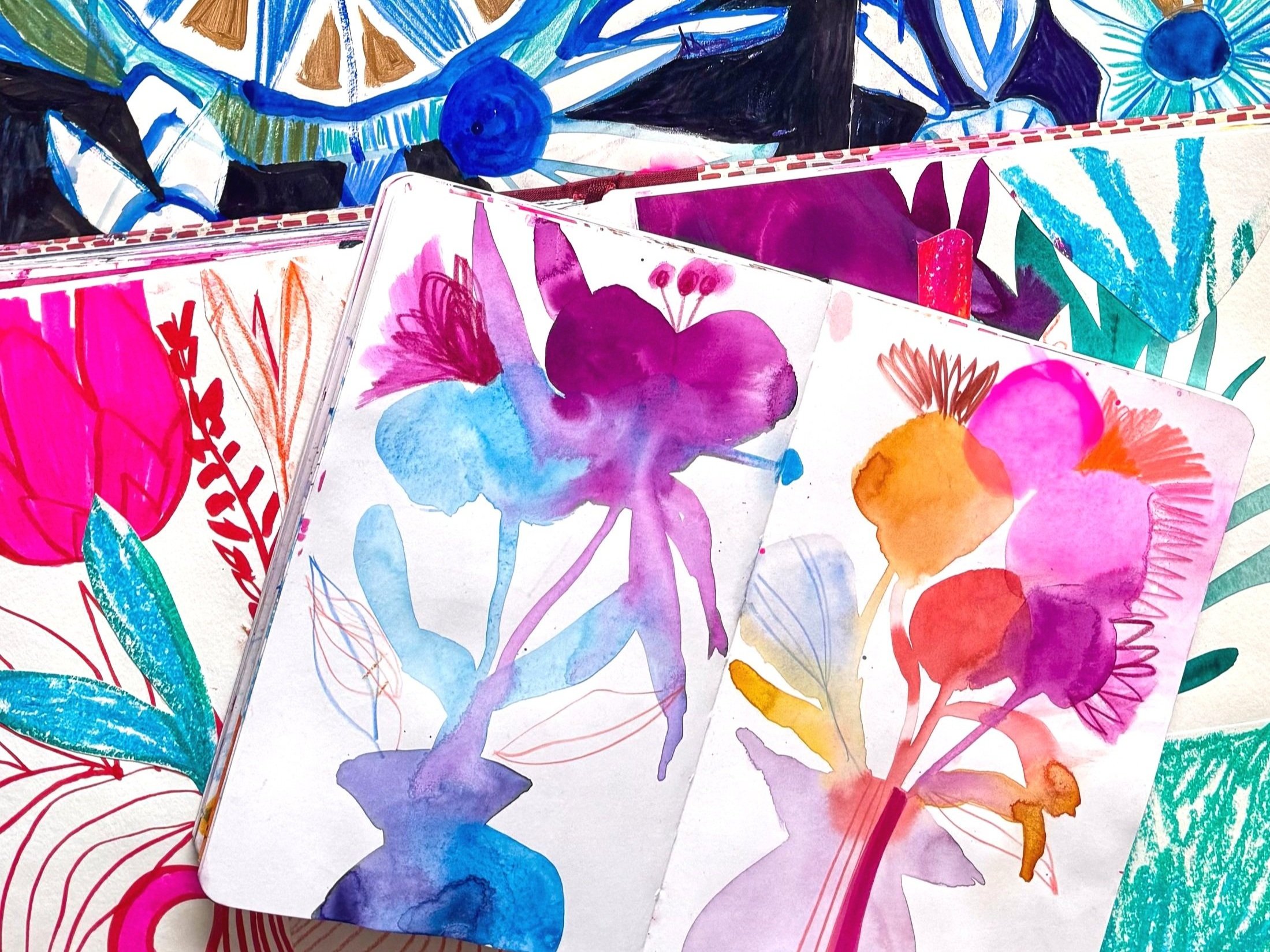Abstract painting process
Setting a direction
I am working on some new small paintings. The way I paint involves hope and optimism.
I have no idea how these paintings will develop or what they will become. I just have to trust that I can navigate my way through, one decision at a time. There is a paradox in the painting process I find, it involves both a ‘letting go’ and the tenacity of ‘keeping going’.
Before I began this series, I spent time thinking about the kind of paintings I wanted to create.
I looked back at my sketchbooks and created some studies, thinking about how I wanted these new works to feel. I wrote down a few guiding words; antique embroidery, weird and wonderful vessels, pattern and lines, hidden treasure, spaciousness coupled with complexity.
There is no one way to build a painting
There is no one way to build a painting. My process suits me. I build up layer after layer of richness, colour and paint. Holding my intentions loosely. Responding to what is. Letting go of the plans and perhaps heading in a different direction entirely. I never know how my paintings will turn out until they are finished. I quite enjoy this uncertainty. And these paintings took an unexpected direction…
The layered process
Painting in layers is both a process of discovery and concealment. The ability to add and obscure makes painting with acrylics a dance between flow and frustration. Often, the final painting only really reveals itself in the later stages.
I find that a painting tends to evolve in distinct phases:
1. Play and possibility
The early layers are free and experimental. I tend to start with a single colour ground, just a single colour covering the whole board. Then I add paint marks and coloured shapes. Knowing that only small remnants of these layers may show in the finished work allows for boldness and spontaneity.
2. The messy middle
The painting process can feel like a tussle at this stage. The composition starts to emerge, but the painting oscillates between looking promising and looking lost. It often feels like a wrangle, I have to paint over sections I love to find a composition that works. Some days, I leave the studio feeling like the paintings are worse than when I started, some days everything flows beautifully. This stage always seems to require tenacity and hope.
3. Refinement and resolution
I keep turning up and making one decision after another. Gradually, clarity arrives. The painting begins to make sense, and I shift into refining details, making small adjustments until everything feels in place.
The obstacle is the way
As Marcus Aurelius put it nearly 2000 years ago: “The impediment to action advances action. What stands in the way becomes the way.”
I welcome the difficult bits and the problem solving involved in creating a painting. The grit makes the pearl. I don’t really want the painting process to always feel easy and simple. I don’t want to know how a painting will turn out before I’ve even started. Sometimes I like the challenge of working through obstacles. The reward is in the overcoming of the difficult bits and developing something that feels good to me.
Capturing wisdom
I take time to reflect as I work and once the paintings are complete. Taking stock. Capturing wisdom. Understanding my own creative process strengthens my intuition and deepens my artistic practice. Here are some questions I ask myself, perhaps they will be helpful to you too:
What did I learn?
What worked?
What do I want to remember for next time?
What did I enjoy?
What are my observations on the process?
What advice do I want to give myself?
To be continued…
Painting is not always a smooth journey, but the good bits and the problem solving are what makes it a meaningful endeavour. It’s in the layers, both the literal ones and in those of experience that we find satisfaction, that we create art that feels like our own, that means something to us.
I will come back and show you how these paintings turned out. I also intend to do another series which is closer to the original indigo and white studies, but let’s see what actually happens…
Materials
These paintings are still works in progress, but were made on 30cm x 30cm wooden panels from Cowling and Wilcox using a variety of paint including: Sennelier Heavy Body Paint, Daler and Rowney FW Ink and Liquitex Soft Body Paint








